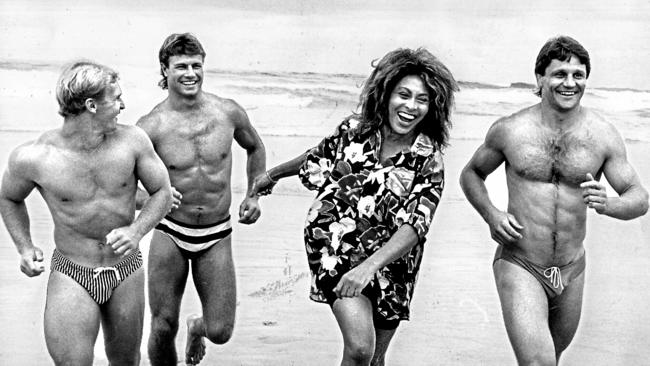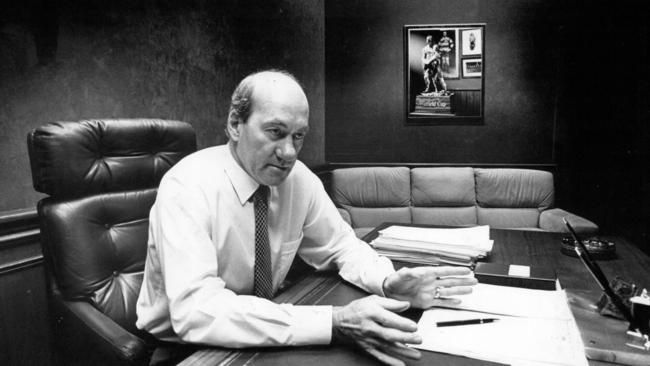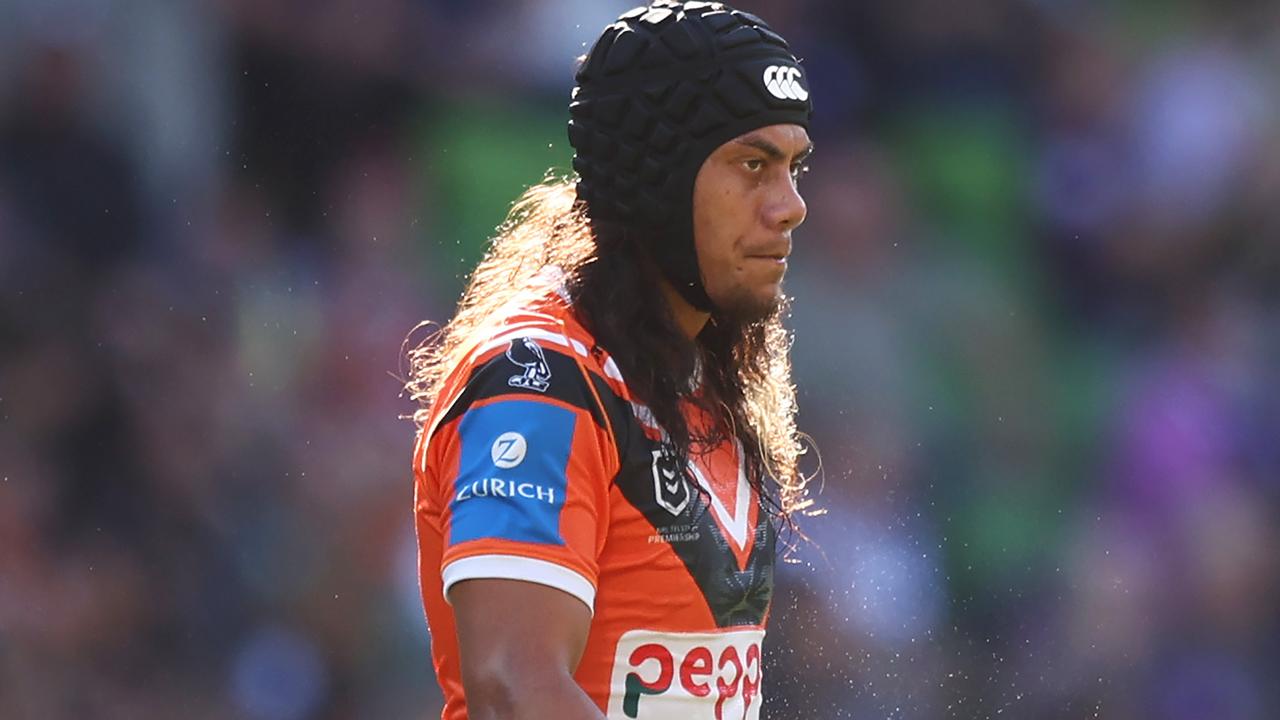Thirty years on from Simply the Best the NRL needs the same kind of vision at the top
Thirty years ago this week rugby league launched an advertising campaign that changed the game. Now the NRL is afraid of any kind of adventurous innovation writes PAUL KENT.
POWER RANKINGS: The title challengers
ALMOST OUT: Terepo’s Eels future in serious doubt
It was 30 years ago on Wednesday that rugby league broke from its working class shackles and became the future of Australian sport.
The NSW Rugby League launched its new season at the Sydney Football Stadium and lit up the sporting world with its new ad. Tina Turner, American rock royalty, was there across the magnificent new scoreboard.
The ad was sexy and sharp. The game was on a winner. Sex sold.
How times have changed.
Now, we wonder, has the game’s greatest era come and gone?
Tina Turner’s involvement with the NSW Rugby League did not begin with Simply The Best, as many believe. A different song was brought to the League, What You Get Is What You See. It came about only because it was half written out of Australia and presented to League boss John Quayle as a local song.
The League liked the song and trialled various versions with local singers before conceding it worked only with Turner. Quayle’s secretary Mickie Braithwaite was married to former Sherbet frontman Darryl Braithwaite who was managed by Roger Davies, who also happened to manage Turner.

Quayle cried poor when he spoke to Davies. Davies called his bluff.
The NSWRL was close to being broke but Quayle had an ace. He knew tobacco sponsorship was ending.
If he snuck in a long term deal with Winfield, he suggested, taking it a year past the tobacco ban, would Winfield carry the freight for Turner?
Winfield liked it.
John Quayle was a visionary. Some people just think big.
Within five years Quayle and his chairman Ken Arthurson had announced plans to expand the game Australia-wide. The AFL was on the run, playing catch-up.
A 20-team competition was launched in 1995 with teams in Perth, Townsville, Auckland and a second team in Brisbane. AFL people were begging Quayle to take Turner off the advertising, saying she was killing them.
Then rugby league’s oldest and deadliest habit, self-interest, surfaced again.
Super League erupted and the South Queensland Crushers became the war’s first casualty. The game got smaller, not bigger. It became beset with small civil wars.
Ever since, debate has hammered on about the need for a second team in Brisbane.
It lit up again over the weekend when former Brisbane coach Wayne Bennett, no longer with a vested interest in the Broncos, publicly supported for the first time a second team in Brisbane.

The question is not “if” or “can” but “who” and “when”?
One of the first quotes on entry from ARL Commission chairman Peter Beattie was rugby league needed to expand or die.
The game needs new markets. The Sydney market remains congested with teams but nobody wants to relocate.
How much longer will get the refuse to get out of its own way? How much longer can the game afford it?
No team will volunteer to move so the NRL needs to find an incentive to prompt them.
It will take someone with vision and guts to deliver.
Someone like Quayle, who found a way to simply get it done.
Turner agreed to front the game’s new add 30 years ago but the conditions were tight.
She had one day, in England, to shoot the ad. The advertising company, Hertz Walpole, had one more request.

“You’re going to need a good looking player,” said Jim Walpole.
Quayle sat back with the quiet contentment of a fat man having finished his second helping of pudding.
“Don’t worry,” he said. “I’ve got Andrew Ettingshausen playing in England. He is the best looking player ever.”
Ettingshausen was playing for Leeds in what was the Australian summer. Quayle got Ettingshausen organised to shoot with Turner on a Tuesday.
Then Quayle thought he might need one more player so he called Gavin Miller, playing for Hull Kingston Rovers, swearing him to secrecy.
It was all set until Miller rang Quayle the weekend before the Tuesday.
“ET’s game got snowed out,” he said.
“Why’s that matter?” asked Quayle.
“It’s been rescheduled for Tuesday. He can’t make it.”
Quayle sighed.
“Don’t worry, though, mate, I’ve fixed it,” Miller said. “Me and Cliffy Lyons will do it.”
The night before the shoot Quayle took some old VHS tapes around to Turner’s home in Chelsea and told her of the wonderful young men playing the game.
She wanted to know what outfit to wear, modelling various evening gowns and well-tailored dresses until she walked out in a pair of red hot pants.
“That’s it!” Quayle barked.
The next day they went to a cold ground in Fulham to shoot the ad that would change rugby league for what we thought would be forever. Turner walked in to the dressing room and met Cliff Lyons and Gavin Miller.
Later, in a quiet moment, she turned to Quayle.
“John,” she said, “you told me last night they were good looking boys. I’d hate to see who you left behind.”


